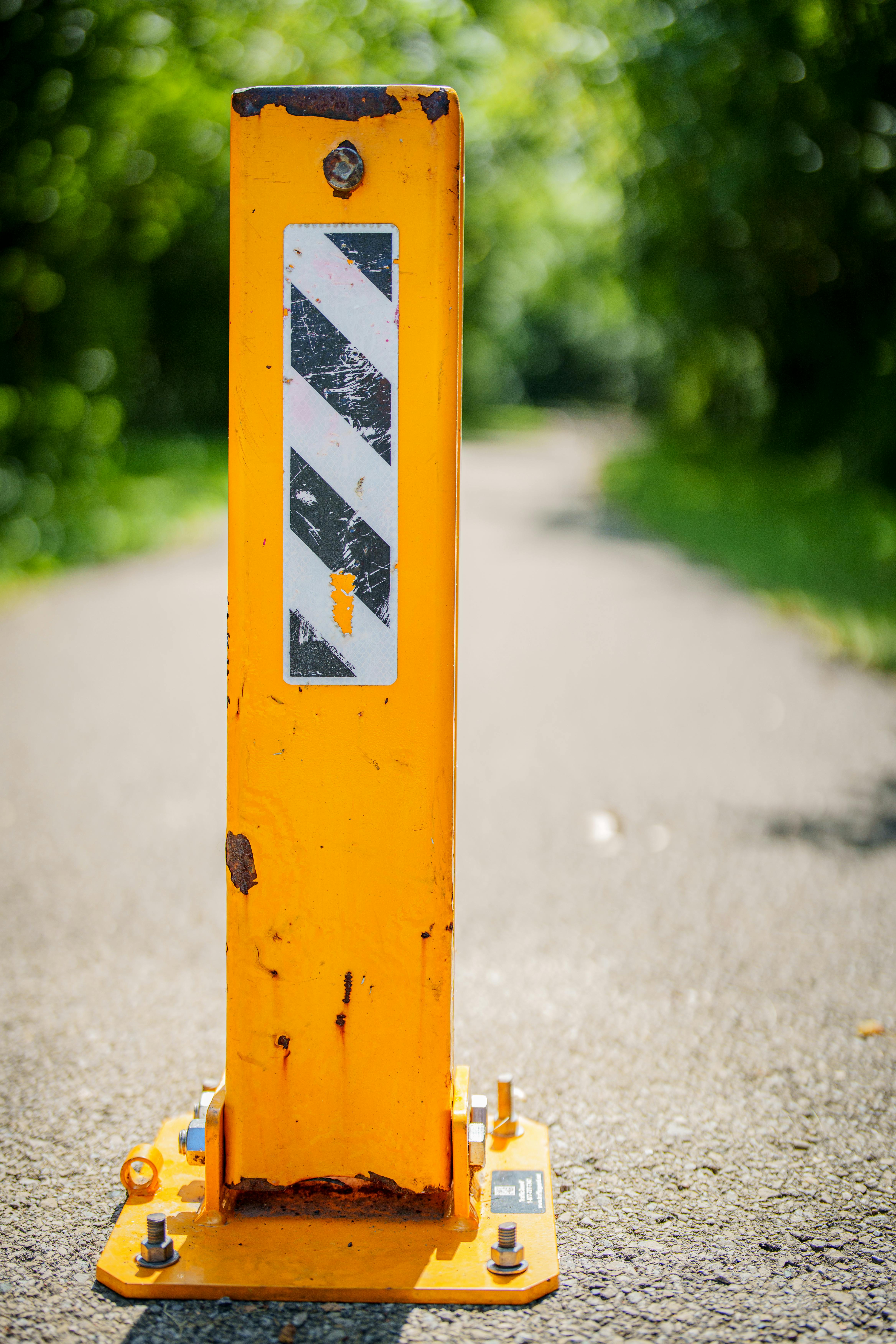Maryland, known as “The Free State,” offers a captivating blend of historical charm and diverse natural landscapes. As you explore this Mid-Atlantic gem, you may find yourself wondering just how safe it truly is. In this article, we will uncover the various aspects of safety in Maryland, from crime rates to emergency preparedness, so that you can navigate the state with confidence and peace of mind. Whether you’re planning a visit or considering a new home, understanding the safety measures in place will enable you to fully enjoy all that Maryland has to offer. So, let’s embark on a journey to discover just how safe this charming state is. Maryland is generally considered a safe state when compared to national crime rates. However, it is essential to examine crime rates in more detail to have a more accurate understanding of the overall safety of the state. In this article, we will delve into various aspects of crime rates in Maryland, including overall crime rates, violent crime rates, and property crime rates. Additionally, we will compare these rates to national averages and explore the safest and most dangerous cities in the state.

Overall Crime Rate
The overall crime rate in Maryland is an important factor to consider when assessing the safety of the state. The overall crime rate takes into account various offenses, including violent crimes and property crimes. While crime rates can vary across different regions within the state, Maryland generally experiences a slightly higher crime rate compared to the national average.
Violent Crime Rate
Examining the violent crime rate is crucial to understand the prevalence of offenses such as homicide, assault, and robbery. While Maryland’s violent crime rate is lower than the national average, it is still essential to be cautious when venturing out, especially in certain areas. Understanding the factors contributing to violent crimes can help in formulating effective measures to combat them.
Property Crime Rate
Property crimes, which include offenses such as burglary, theft, and motor vehicle theft, are another significant aspect of crime rates to consider. Maryland has a higher property crime rate compared to the national average. It is crucial for residents and visitors alike to take precautions and implement safety measures to protect their belongings and properties.
Comparison to National Averages
To gain a better perspective on the safety of Maryland, comparing its crime rates to national averages can provide valuable insights. One way to assess the overall safety is by examining safety and crime indexes.
Safety Index
The safety index is a measure that takes into account various factors, such as crime rates, infrastructure, and healthcare, to determine the overall safety of a location. While Maryland’s safety index is slightly lower than the national average, it still ranks relatively well compared to other states.
Crime Index
The crime index serves as an indicator of the level of crime within a particular area. Maryland’s crime index is higher than the national average, indicating that crime rates in the state are somewhat higher. However, it is important to note that this index considers both violent and property crimes.

Safest Cities in Maryland
While Maryland may have higher crime rates compared to national averages, there are several cities within the state that have notable safety records. These cities are known for having lower crime rates, making them attractive places for residents and visitors alike.
City A
City A stands out as one of the safest cities in Maryland. With its effective law enforcement strategies and community-led initiatives, City A has managed to maintain a relatively low crime rate across the board. Residents and visitors can feel secure knowing that the city places a strong emphasis on safety.
City B
City B is another city in Maryland that boasts a commendable safety record. The local police department works closely with the community to prevent and combat crime. Consequently, residents and tourists can enjoy a peaceful environment, making City B an excellent choice for those seeking safety.
City C
In City C, safety is a top priority. The city has implemented various measures to ensure the well-being of its residents and visitors. By promoting community engagement and fostering strong relationships with law enforcement agencies, City C has managed to create a safe and secure environment for all.
Most Dangerous Cities in Maryland
While Maryland as a whole maintains a relatively safe reputation, there are certain cities that have higher crime rates and are considered more dangerous compared to others. It is crucial to be aware of these cities to exercise caution and take appropriate safety measures when visiting or residing in these areas.
City X
City X has received attention due to its higher crime rates compared to other cities in Maryland. It is important to be cautious and take necessary precautions while traveling through or staying in City X. Educating oneself about the specific risks and implementing safety measures is crucial when dealing with higher crime rates.
City Y
City Y has experienced an increase in crime rates in recent years. It is important for residents and visitors to remain vigilant and aware of their surroundings when in City Y. Taking personal safety precautions and staying informed about the city’s crime trends can help mitigate potential risks.
City Z
While City Z does have a comparatively higher crime rate, the local law enforcement agencies have been working closely with the community to combat criminal activities. Despite the challenges, efforts are underway to improve safety and reduce crime rates in City Z. Being aware of the specific risks and adopting safety measures while in the city is vital.

Trends in Crime Rates
Understanding crime rate trends can provide valuable insights into the safety of a region. Analyzing recent changes and long-term trends can help identify patterns and formulate effective methods to address and reduce crime rates.
Recent Changes
In recent years, Maryland has seen a slight increase in certain crime rates. Factors such as socioeconomic disparities, drug activity, and social issues contribute to these changes. It is important for law enforcement agencies, community leaders, and residents to collaborate and implement strategies to address these challenges effectively.
Long-Term Trends
When examining long-term trends in Maryland’s crime rates, there has been a general decline in violent crime rates over the past couple of decades. This can be attributed to various factors, including initiatives aimed at crime prevention, intervention, and improved law enforcement strategies. However, property crime rates have remained relatively stable during this period, highlighting the need for continued efforts to address this issue.
Factors Contributing to Crime
To address the issue of crime effectively, it is essential to understand the factors contributing to its prevalence. Several economic, social, and drug activity-related factors are known to impact crime rates.
Economic Factors
Socioeconomic disparities and poverty are often linked to higher crime rates. Areas with higher poverty rates tend to experience increased criminal activities. Addressing these economic disparities through job creation, education, and social programs can help mitigate crime rates.
Social Factors
Social factors such as social inequality, lack of community cohesion, and breakdown of family structures can contribute to higher crime rates. Promoting social inclusion, fostering community engagement, and implementing programs that strengthen social bonds can have a positive impact on reducing crime.
Drug Activity
Drug-related activities are known to contribute significantly to crime rates. Addressing drug activity through prevention, treatment, and law enforcement efforts can help curb crime levels. Collaborative efforts between law enforcement agencies and community organizations are crucial in combating drug-related crimes effectively.

Law Enforcement Efforts
Law enforcement agencies play a vital role in ensuring public safety and combating crime. In Maryland, various initiatives and collaborations have been undertaken to tackle crime effectively.
Police Department Initiatives
Maryland’s police departments have implemented several initiatives aimed at reducing crime rates and improving public safety. These initiatives include community policing, intelligence-led policing, and proactive law enforcement strategies. By focusing on community engagement and targeted enforcement, the police departments aim to create a safer environment for all residents and visitors.
Collaboration with Community
Collaboration between law enforcement agencies and the community is crucial in combating crime effectively. Maryland’s police departments actively foster relationships with community members through programs such as neighborhood watch, citizen academies, and community forums. These collaborations promote trust, communication, and active participation, creating a more secure environment.
Safety Measures for Residents
Ensuring personal safety is important for residents of Maryland. Implementing safety measures can significantly reduce the risk of becoming a victim of crime.
Home Security Systems
Installing home security systems, such as alarms and surveillance cameras, can act as a deterrent for potential burglars and intruders. Additionally, ensuring doors and windows are properly secured and well-lit can enhance the safety of residential properties.
Neighborhood Watch Programs
Participating in neighborhood watch programs allows residents to actively contribute to the safety of their communities. By reporting suspicious activities, collaborating with law enforcement, and maintaining awareness, neighborhood watch programs can have a significant impact on crime prevention.
Personal Safety Tips
Adopting personal safety practices such as staying aware of one’s surroundings, avoiding risky areas, using well-lit routes, and keeping valuable possessions secure can greatly reduce the risk of becoming a target for criminals. Additionally, using caution when sharing personal information online and being mindful of personal safety while out in public are essential aspects of personal safety.

Safety Measures for Tourists
Tourists visiting Maryland can take specific precautions to ensure their safety throughout their trip. Familiarizing oneself with tourist-friendly areas, taking necessary precautions, and having access to emergency contacts can contribute to a secure and enjoyable experience.
Tourist-Friendly Areas
Maryland offers several tourist-friendly areas that are known for their safety and attractions. Researching and visiting these areas can provide tourists with a sense of security and a wide range of activities to enjoy.
Precautions for Visitors
While exploring Maryland, it is important for tourists to remain vigilant and exercise caution. Being aware of one’s surroundings, keeping valuables secure, and following local regulations can help tourists avoid potential risks. Taking extra precautions during nighttime excursions and in crowded areas can also enhance personal safety.
Emergency Contacts
Acquiring emergency contact information, such as local law enforcement agencies, medical facilities, and embassy contact details, is crucial for tourists. Being prepared and knowing who to contact in case of an emergency can expedite assistance and ensure a swift response during unforeseen situations.
Efforts to Improve Safety
Maryland’s government and community organizations continually strive to improve safety and reduce crime rates. Various initiatives and programs have been implemented to address the complex issue of crime effectively.
Government Initiatives
The state government of Maryland recognizes the importance of maintaining public safety and reducing crime rates. Initiatives such as funding for law enforcement agencies, crime prevention programs, and investments in social and economic development aim to create a safer environment for all residents.
Community Programs
Community-led programs and organizations play a significant role in improving safety within Maryland. These programs focus on promoting social cohesion, youth development, and education. By actively engaging with residents, these programs work towards reducing crime rates and enhancing the overall well-being of communities.
In conclusion, Maryland’s overall crime rate, while slightly higher than the national average, does not overshadow the state’s many safe areas. Understanding crime rates, trends, and factors contributing to crime is crucial in formulating effective strategies to ensure public safety. Law enforcement agencies, in collaboration with the community, play a vital role in creating safer environments through initiatives and programs. Residents and tourists can also take personal safety measures to safeguard themselves and contribute to a secure environment. Maryland continues to make efforts to improve safety through government initiatives and community programs, fostering a brighter and safer future for all.

